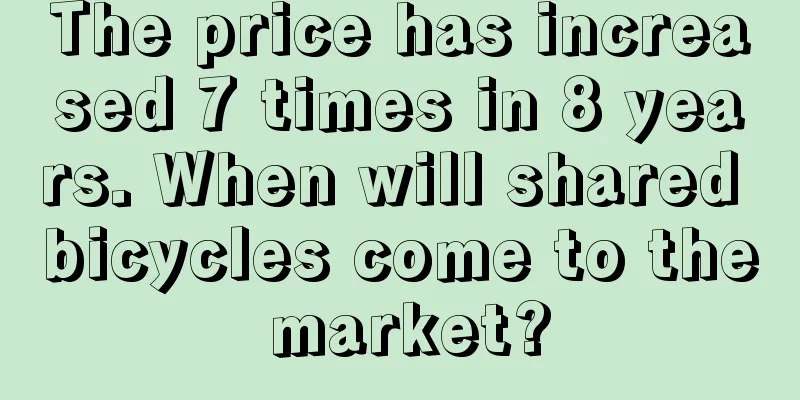Step-by-step disassembly: an excellent data analysis project

Many students have been calling for practical examples, and here they are today. The full text is full of hard-core information, so please read it carefully. Problem scenario: The TOB business line of a large Internet company can provide SaaS/Paas services to platform merchants, but suffers from low sales level, poor communication skills and low conversion rate. Now it plans to conduct communication skills training to improve customer conversion rate. 1. Original ModelThe simplest approach is to define two versions of the sales pitch, sales pitch A and sales pitch B. Just look at the conversion rate and use the one with the higher conversion rate! (As shown below) So, is there any problem with doing this? 2. Advanced ArchitectureThe simplest approach may have several layers of problems: ▌Question 1: The impact of sales itself is not considered. It is possible that the sales itself is strong, so the sales are good. Therefore, it is necessary to analyze the effectiveness of sales skills for different levels, such as S-level, A-level, B-level, and C-level. ▌Question 2: The impact of customers is not considered. It is possible that certain customers are easy to close deals with, so it is necessary to distinguish customer levels, such as VIP1, VIP2, and VIP3, and look at the effects separately. ▌Question 3: The actual impact of the sales pitch is not considered. Some customers may be willing to listen to anything, while others may not care about anything and only care about the price. Therefore, cross-testing should be done to find the customer groups that can be influenced by the sales pitch (as shown below). Finally, the result may be as shown in the figure below, where reasonable sales talk is configured for each type of sales and each type of customer to maximize output. 3. The first foundationLet me ask a simple question: How do you get the SABC level for sales? Since there are classifications, there must be criteria for judgment. The construction of judgment criteria itself is a big project. for example: 1. Does good performance mean good sales? 2. Intention, signing, payment collection, repeat purchase, which aspect can prove that he is a good salesperson? 3. Each of the above four aspects has at least two indicators: quantity and amount... 4. If you choose contract signing and payment collection, the intersection of the two indicators is a matrix. How to define it? (As shown below) 5. What if there are three indicators? What if there are four indicators? All of the above issues require some struggle before there can be any results. Now simplify the problem and assume that we only examine the contract amount. A high contract amount means good sales. Then the question arises: how long should we examine the performance? Once the time dimension is added, new entanglements begin, such as: *Does one month of inspection count? Three months? Half a year? *Observe for one month, this month is good, but next month is not good, is it considered good? *When inspecting for 3 months, is it the total amount, the average value, or the number of times the standard is met in a single month? *After 6 months of observation, should we distinguish between those with good stability, those that are getting better and better, and those that were good at first and then worse? (As shown in the figure below) All the above problems are dealt with in order to come up with a simple salesperson classification label. The same problem also exists with customers, with exactly the same entanglement. For example, assessing customer levels: 1. What indicators are examined? 2. How long will the inspection last? 3. What level of indicators is considered good? 4. How to deal with fluctuations during the probation period? 5. Should we make predictions before signing a contract? How to make predictions? 6. Should we revise the forecast during the contract signing process? How to do it? Only after all the information is analyzed clearly can we have accurate customer ratings, especially pre-sales ratings. It is precisely because the above work is too complicated. So three common solutions are derived: 1. From simple to complex: first do single indicator classification, then add it slowly, and iterate several times. 2. Capture typical cases first and then summarize: For example, ask the business side to label a few positive samples first, and then study their characteristics. 3. Work backwards from the results: For example, if the business side’s KPI is the contract value, then how much must be achieved to achieve this goal? Each method has its own way of working, which I will not elaborate on here, but just to give you a sense of the fact that getting an accurate classification requires a lot of work that is both laborious and costly, or you can only make the simplest model full of bugs. However, even so, is the problem solved? 4. The second level of foundation questions: How did the classification of speech skills A come about?In fact, sales rarely involve just one sentence. Especially for B2B sales, you have to say a lot of things. There are at least four parts here: 1. Opening greetings: opening greetings and introducing topics 2. Product introduction: proactively introduce product features, advantages, and benefits to customers 3. Question answering: answering customers' questions and doubts 4. Sales promotion skills: urging customers to place orders quickly Two questions arise here: First, how to classify and label these four parts and include them in the analysis. Second, how to know what the sales said. Regarding question 1, how to label and categorize the speech itself, you can do the following: 1. Version of product introduction 2. Customer issues: functions, prices, experience, cases, system interfaces 3. Classification of sales promotion techniques: by project progress, by discount, by resource control In short, only with these solid foundations can we have the initial classification label of speech A. This is relatively easy to deal with. Question 2 is more entangled. 5. The third foundationRegarding the second question, the key lies in: how to collect data. 1. If there is an SCRM system, the transaction process can be systematically implemented, and the data can be supplemented to a certain extent, such as which cases are shown (product introduction stage), which materials are called (question and answer stage), and which discounts are inquired (order promotion stage) 2. If there is no system support, then we can only infer from other behaviors, such as sales training, sales strategies, the type and quantity of demo applications, and the discounts applied for. Then, it is derived: 1. Sales training records, training type tag library 2. Sales strategy records, strategy classification tag library 3. Apply for demo records and type tag library 4. Price application records, product price discount label library Without these records and labels, the entire sales process is out of control. First, you don’t know what you did, and second, you can’t relate it to the work results. It’s impossible to conduct in-depth analysis. In short, first, there are records, and second, there are labels, so that analysis can be done easily. VI. Summary of ExperienceIf we look at how to find a good wording in isolation, it seems that it has been done perfectly in the surface construction stage. But in fact, if it is separated from the large amount of foundation construction at the lower level, no matter how gorgeous the surface building is, it cannot be built. The whole process is connected, which is to use a huge system to solve a few business problems. Although the workload is large, it is really effective (as shown below) Note: After this system is built, you can give it a nice name, such as the CST model (Customer Success Test), which also sounds very impressive when combined with the architecture diagram. VII. Frequently Asked QuestionsWhy is it so difficult to make useful analysis in actual work? The root cause is: lack of infrastructure and detachment from business. Students who work with data rely too much on statistics and algorithms themselves, lack basic business label construction, lack standard results recognized by the business, and will not push the business to improve processes and collect more data. Business people ignore the impact of processes on data, and do not pay attention to process specifications and data collection. They think data falls from the sky, are careless about data construction, and expect a "god from Tou Teng'a Company" to get it done in one go. The combination of the two is like a blind man riding a blind horse. The actual situation is: Basic data no Business tag no Process data no Prediction No They will just cross the transaction results and output them mindlessly: *The conversion rate of industry A's speech A is 14 points higher* The conversion rate of industry B's speech B is 5 points higher* … When the sales department came to question, “Is it the sales itself, the sales pitch, the product, the promotion, or external factors?”, they couldn’t answer any of the questions. In the end, they could only tremble and say, “Let’s find a few sales people to do some research???” 8. Scenario ExpansionSome students may say: the sales process itself is difficult to digitize, but it is easy if it is an online transaction, because every step is recorded with data. Yes, online transactions have data records, and conversion funnels can be drawn, but if the final conversion rate is not high, how to analyze it? Do you want to rate the promotion channels? Do you want to estimate the response rate of each channel? Should I label the promoted content? Should you label your CTA actions? Should you label conversion products? Should we label the target audience for push notifications? These are all the same basic construction. If these things are not done, and the final conversion rate is low, the operation will question: Is it the channel itself, the copywriting, the product, the promotion efforts are not strong enough, or external factors? I only know how to draw a cross table with channel type, customer type and conversion process. He would just keep on saying, "Because the conversion rate in the third step is low." He would tremble and say, "Should we find a user to do some research?" So, funnel chart and funnel analysis are two different things. It is easy to make a funnel chart, but to do funnel analysis, you have to carefully design the ideas, lay a good foundation, and eliminate mixed factors. |
<<: The rise of the top of a sub-category on Xiaohongshu: the repurchase rate has exceeded 70%!
>>: What are the most frequently-watched data for Pinduoduo?
Recommend
User portraits are criticized as "useless"! How can we make them useful?
As an important part of data analysis reports, the...
Does Amazon's early payment have any impact? What is the process of opening a store?
Generally, Amazon arranges loan release twice a mo...
618 e-commerce ads invade content communities
In today’s content communities, advertisements are...
My second aunt wants to be an internet celebrity
As I got closer to home, I opened Douyin and saw m...
Alibaba International Station Logistics upgrades the order function of the mini program
Alibaba International Station Logistics Mini Progr...
When promoting e-commerce on Douyin, it is essential to have a shelf market
In Douyin e-commerce, the importance of shelf fiel...
What is Shouxin Easy Payment? What are its advantages?
Today, let's learn about Shouxinyi Payment, wh...
Why do emotional pain points create cultural hits?
This article analyzes the rise and fall of the Chi...
Young people are most afraid of giving gifts during the Chinese New Year.
The New Year is coming, and many people are alread...
10,000 stores, hot products, marketing, 9.9, these are the four key words that helped Luckin Coffee surpass Starbucks
In 2023, Luckin Coffee's annual revenue surpas...
How to open Shopee Philippines site? Introduction to opening conditions
Shopee has many sites, and the opening methods of ...
Exploring Brand Tone (2023 Edition)
Many companies now emphasize brand tone, which sou...
How to solve the problem of inconsistent data indicators?
In the interview process of data products, inconsi...
What is the Amazon customer service phone number? How can I reduce the response time?
Amazon has a large number of consumers from many c...
Pay for knowledge, and end the relationship as soon as the deal is completed!
Do you know about knowledge payment? Do you know h...









